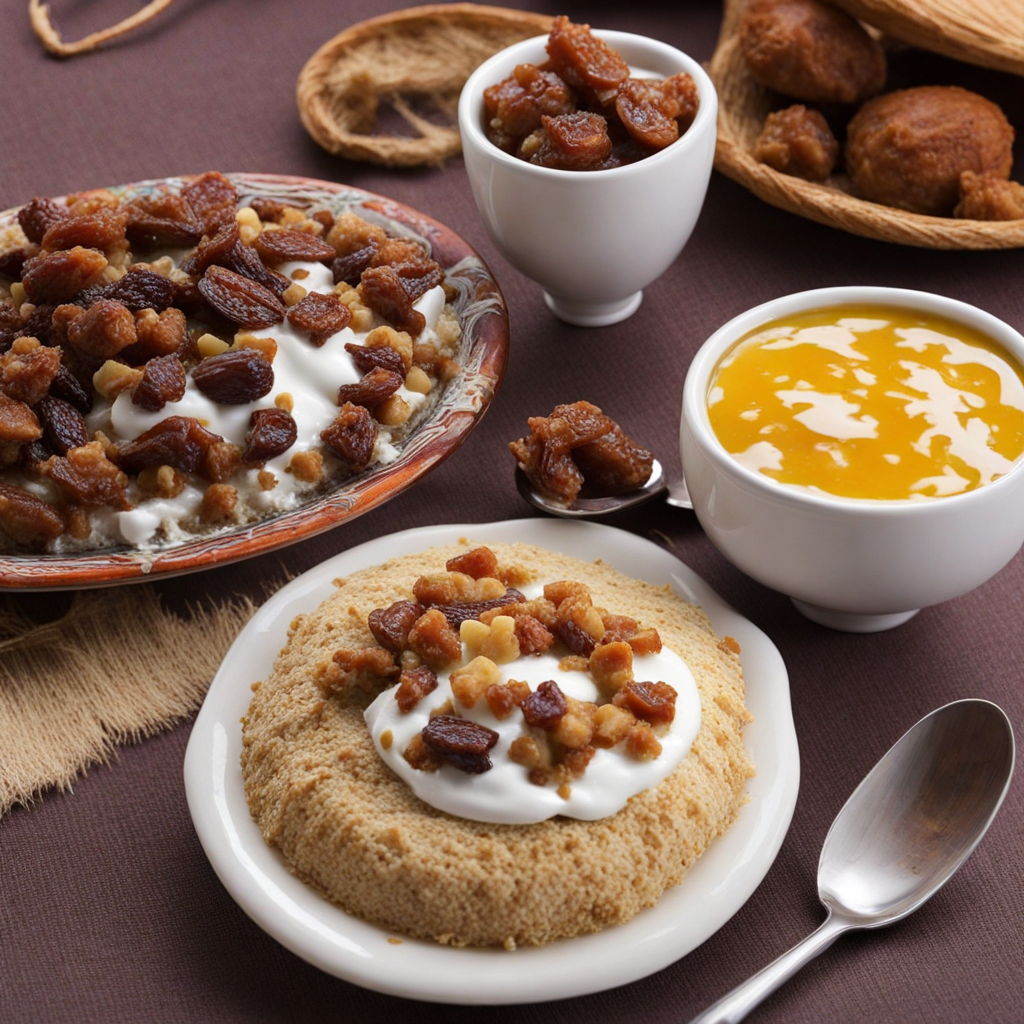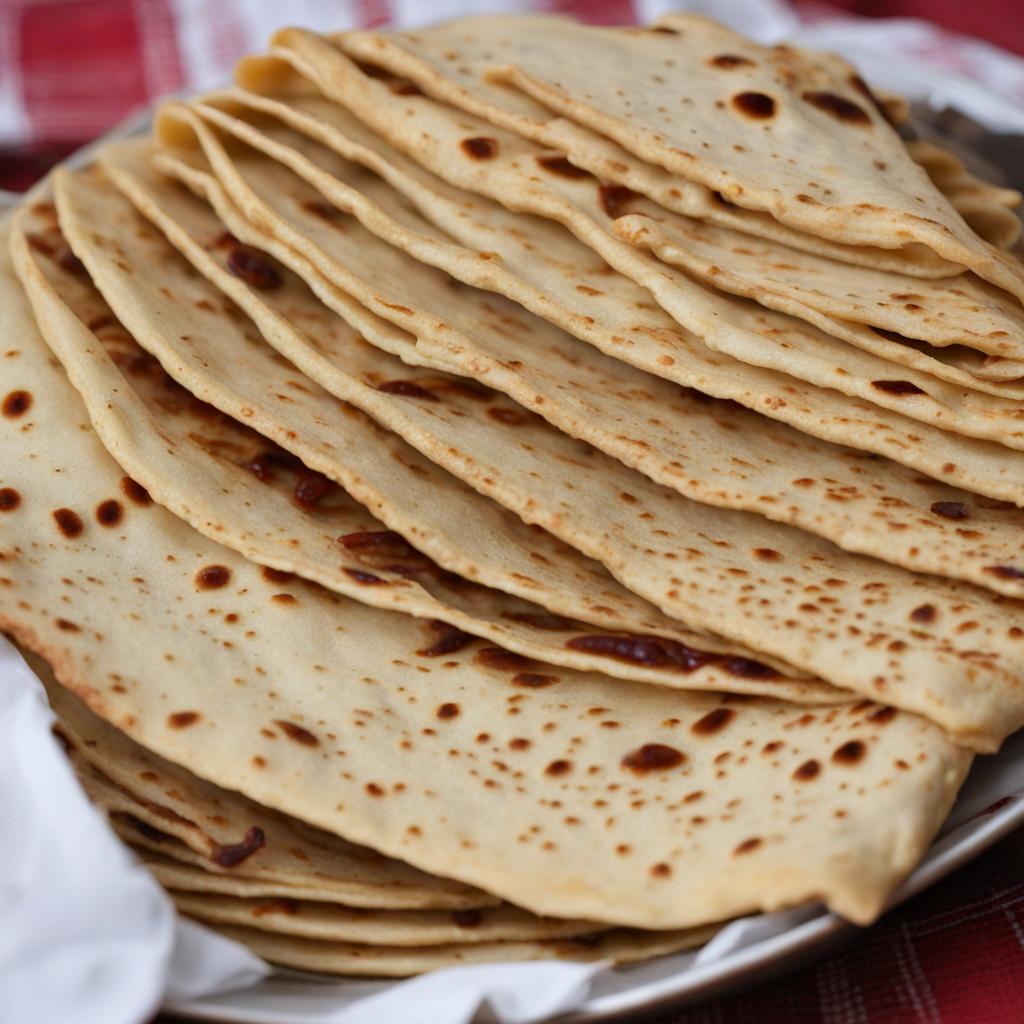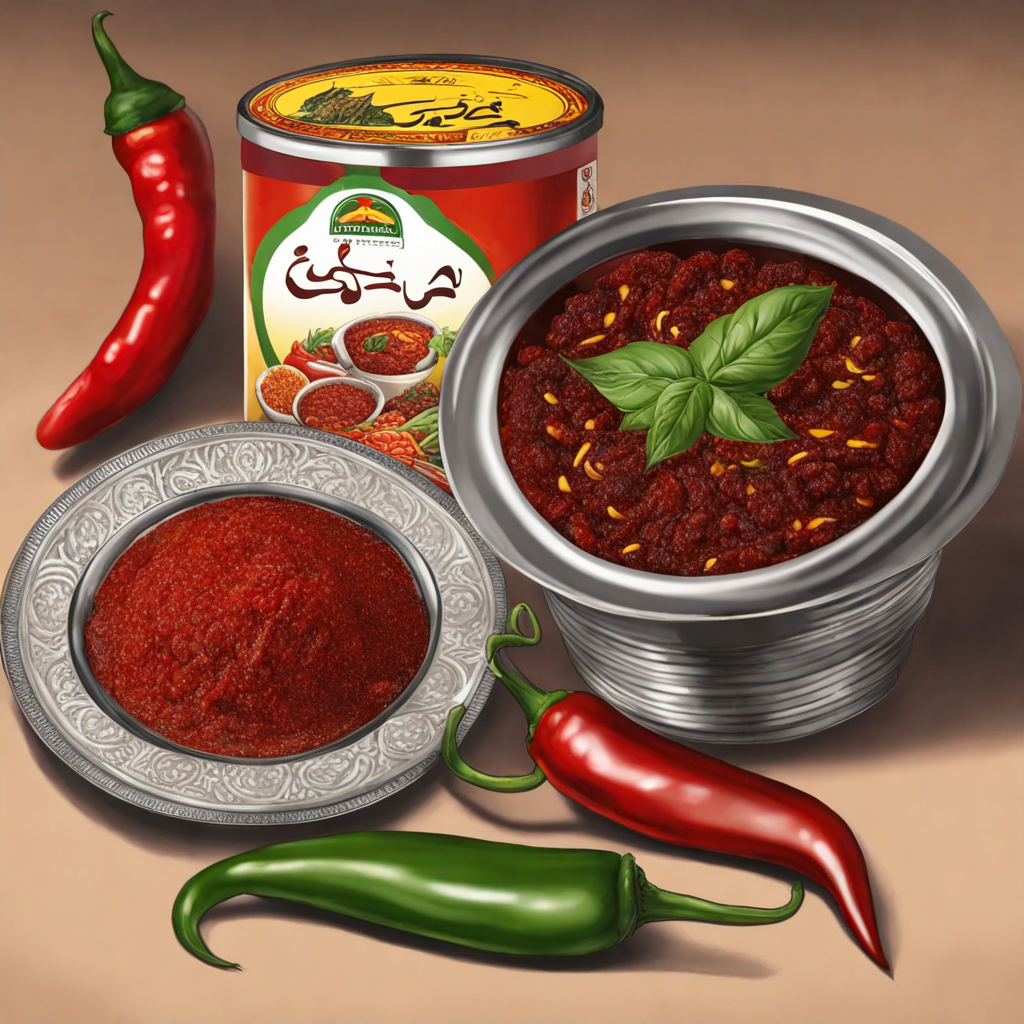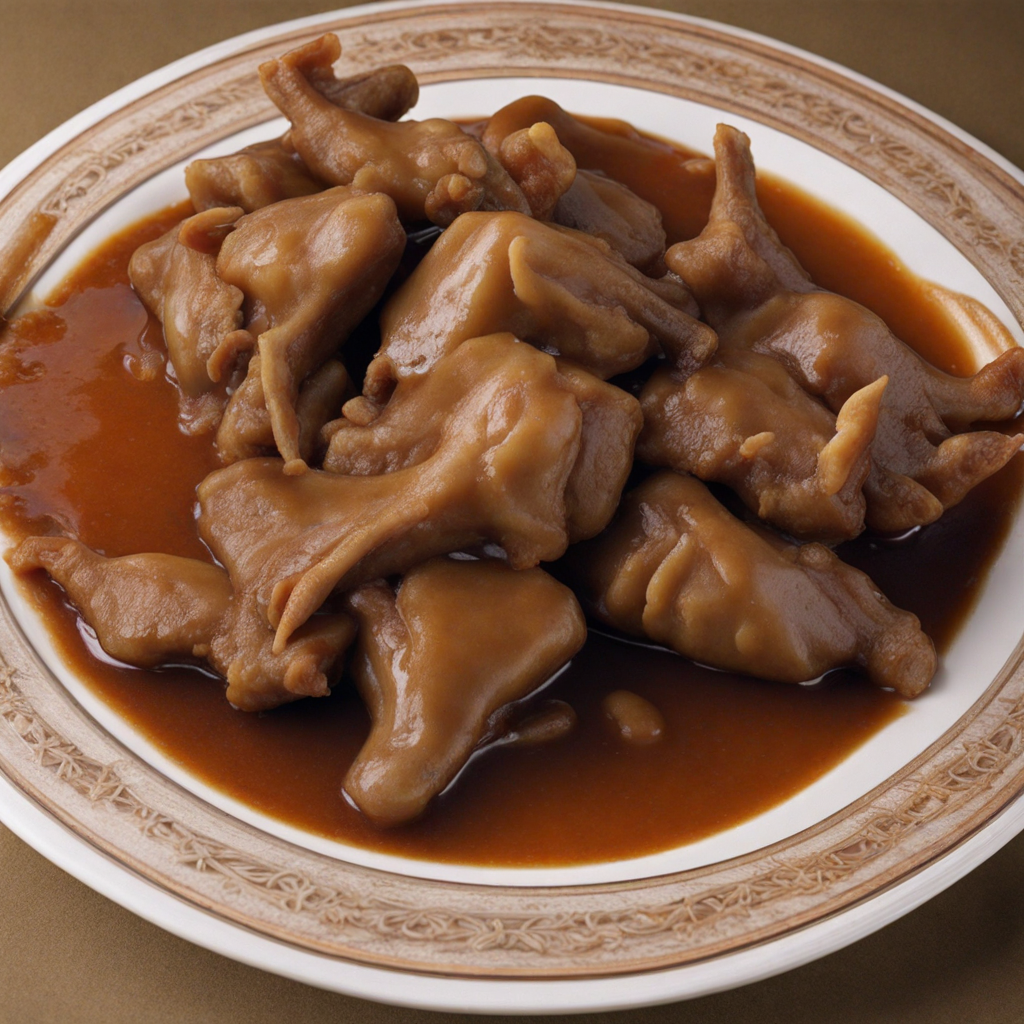Um Fitit
Um Fitit is a traditional Sudanese dish that embodies the rich tapestry of flavors and textures characteristic of the region. At its core, Um Fitit is a layered dish made primarily from sorghum or wheat flour, which is cooked to form a soft, doughy base. This base is then generously topped with a delightful mixture of spices, vegetables, and meats, often featuring lamb or chicken, which are slow-cooked to perfection. The spices used in Um Fitit, such as cumin, coriander, and chili, create a warm and aromatic profile that tantalizes the taste buds, making each bite a unique experience. What sets Um Fitit apart is its communal aspect; it is often served in large platters, inviting family and friends to gather around and share in the meal. The dish is typically accompanied by a side of fresh salad or a tangy sauce, which adds a refreshing contrast to the rich, hearty flavors of the main dish. The combination of the soft, doughy base with the robust toppings creates a satisfying and comforting meal, perfect for both special occasions and everyday dining. Um Fitit is more than just a dish; it is a celebration of Sudanese culture and hospitality. Each region may have its own variation, incorporating local ingredients and cooking methods, which makes it an exciting dish for food enthusiasts looking to explore the culinary landscape of Sudan. The experience of enjoying Um Fitit is enhanced by the warmth of shared company, making it a memorable dish that leaves a lasting impression on anyone lucky enough to try it.
How It Became This Dish
The History of 'ام فتيت' in Sudan: A Culinary Gem #### Origins 'ام فتيت' (Um Fitit), often translated as "Mother of Crumbs," is a traditional Sudanese dish that encapsulates the rich tapestry of Sudan’s culinary heritage. Its origins can be traced back to the diverse cultures and ethnicities that inhabit Sudan, a country with a long history of trade, migration, and intercultural exchange. The dish is primarily made from leftover bread, which is crumbled and mixed with a sauce or stew, often featuring lentils, vegetables, and spices. This practice of using stale bread is emblematic of a broader culinary tradition found in many cultures around the world, where resourcefulness and frugality are paramount. The name 'Um Fitit' reflects the dish's humble beginnings, where it was often prepared as a way to avoid waste, a practice that resonates with the values of sustainability and respect for food that is deeply ingrained in many Sudanese communities. The dish likely emerged in rural areas where resources were scarce, yet creativity flourished in the kitchen as families sought to make the most of what they had. #### Cultural Significance Um Fitit holds a significant place in Sudanese culture, not only as a staple food but also as a symbol of community and familial bonds. In Sudan, food is often a communal affair, and Um Fitit is no exception. Traditionally, it is prepared during gatherings, family meals, and celebrations, serving as a bridge to connect generations. The dish embodies the essence of Sudanese hospitality, where sharing food is a way to foster relationships and strengthen ties among family members and friends. Moreover, the preparation of Um Fitit often involves the participation of multiple family members, particularly women, who come together to cook and share stories. This communal cooking experience reinforces social bonds, allowing for the transmission of culinary knowledge and cultural traditions from one generation to the next. In this way, Um Fitit is not merely a dish; it is a celebration of Sudanese identity, heritage, and the collective memory of the community. #### Ingredients and Preparation The ingredients of Um Fitit are simple yet reflective of Sudan's agricultural bounty. The primary component is leftover bread, typically made from sorghum or wheat flour, which is crumbled into small pieces. This bread serves as the base for the dish, soaking up the flavors of the accompanying sauce. The sauce itself can vary widely, depending on regional preferences and seasonal availability. Common ingredients include lentils, vegetables like tomatoes, onions, and peppers, and an array of spices such as cumin, coriander, and chili, which add depth and complexity to the flavor profile. The preparation of Um Fitit is a labor of love. The bread is first crumbled by hand, then combined with the sauce that has been simmered until rich and aromatic. The dish is often garnished with fresh herbs, such as cilantro or parsley, which add a burst of color and freshness. The result is a hearty, comforting meal that is both nourishing and satisfying, embodying the essence of Sudanese home cooking. #### Evolution Over Time As Sudan has evolved politically and socially, so too has Um Fitit. The dish has adapted to changing times, incorporating influences from various regions and cultures. The influx of different ethnic groups, particularly in urban areas, has led to a fusion of culinary techniques and ingredients, enriching the traditional recipe. Today, one might find Um Fitit served with a variety of proteins, including chicken, beef, or fish, showcasing the adaptability of this beloved dish. Moreover, the rise of globalization and urbanization has impacted how Um Fitit is prepared and consumed. In urban centers like Khartoum, the dish is increasingly found in restaurants and cafes, catering to a younger generation that seeks a taste of home amidst a rapidly changing lifestyle. While the essence of Um Fitit remains intact, the presentation and availability have transformed, merging traditional values with modern dining experiences. Additionally, the growing awareness of food sustainability has reinvigorated interest in dishes like Um Fitit, which exemplify the principle of minimizing waste. As conversations around food security and environmental responsibility gain traction, Um Fitit serves as a reminder of the importance of valuing every morsel and the cultural significance of utilizing resources wisely. #### Um Fitit in the Global Culinary Landscape In recent years, Sudanese cuisine, including Um Fitit, has begun to attract attention on the global stage. As the world becomes more interconnected, there is a growing curiosity about diverse food traditions. Chefs and food enthusiasts are increasingly exploring the flavors of Sudan, bringing dishes like Um Fitit to international culinary forums, festivals, and food markets. This exposure not only highlights the richness of Sudanese cuisine but also fosters a greater understanding of the country's culture and history. Food is a powerful medium for storytelling, and Um Fitit serves as a narrative of resilience, resourcefulness, and community. As more people discover this dish, it becomes a tool for cultural exchange, challenging preconceived notions about Sudan and its culinary offerings. Restaurants and home cooks alike are embracing Um Fitit, showcasing it as a symbol of Sudan’s rich heritage and culinary prowess. #### Conclusion The history of Um Fitit is a testament to the enduring nature of food as a cultural cornerstone. From its humble beginnings as a means to utilize leftover bread to its status as a cherished dish that brings communities together, Um Fitit embodies the spirit of Sudanese hospitality and creativity. As it continues to evolve and adapt in response to changing times and tastes, Um Fitit remains a delicious reminder of the importance of culinary traditions in shaping identity and fostering connections among people. Embracing this dish is not just about savoring its flavors; it is about honoring the history, culture, and resilience of the Sudanese people.
You may like
Discover local flavors from Sudan







